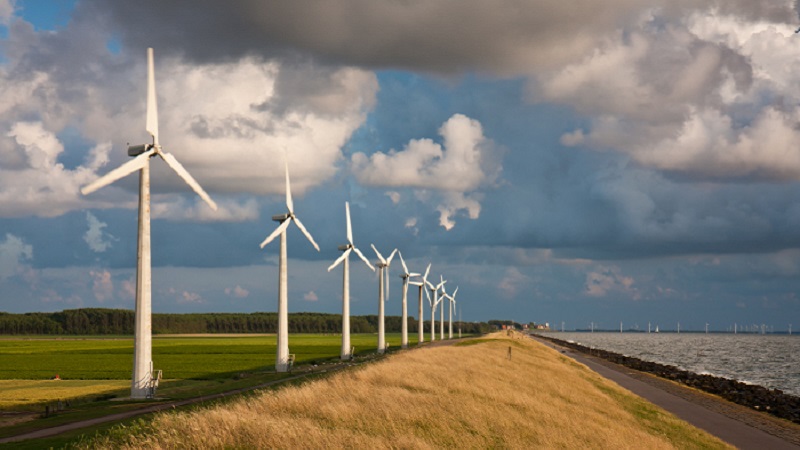2021 was the year ‘net zero’ commitments took hold as governments and companies alike fell over themselves to announce new targets for reducing carbon emissions. Still, the experience of the Paris Climate Accords – to which almost 200 parties signed up in 2015 – has amply illustrated how cheap talk can be and that commitments are always vulnerable to the caprices of politicians. So what progress towards net zero has actually been made?
On the face of it, 2021 appeared to see a considerable step-forward towards net zero. According to a new tracker co-led by Oxford Net Zero, more than 80% of global GDP and 77% of global greenhouse gases are now covered by a national net-zero target – up, respectively, from 68% and 61% in 2020. In the last year, key countries such as India have announced new commitments to cut emissions, along with much of the world’s corporate sector.
This seems encouraging – yet, if only strong commitments and clear plans are included, the Oxford Net Zero tracker shows these impressive numbers shrink to 10% of global GDP and 5% of global emissions.
As the United Nations observes: “Commitments made by governments to-date fall far short of what is required. Current national climate plans – for all 193 parties to the Paris Agreement taken together – would lead to a sizable increase of almost 14% in global greenhouse gas emissions by 2030, compared to 2010 levels. Getting to net zero requires all governments – first and foremost the biggest emitters – to significantly strengthen their Nationally Determined Contributions and take bold, immediate steps towards reducing emissions now.”
This would support the view of many activists that there has been a lot of, well, hot air generated on climate change commitments and very little in the way of tangible progress. Even if it may not initially appear that way, however, says Tabula Investment Management chief executive officer MJ Lytle, governments and policymakers have been making headway.
“Governments made commitments at the Paris Agreement in 2015,” he continues. “From there, we needed regulators to turn it into something so that corporates and financial institutions had something to hang their decisions on. They have now created a structure so that it is at least possible to create the outcomes set in 2015.”
Bold claims
Governments have set down the rules, regulators have built a framework so it seems the baton is now being passed on to the corporate sector and – by extension – the asset owners. How much progress has been made here? There are certainly some bold claims being made – for example, former Bank of England governor Mark Carney has suggested he has secured commitments for “all the money needed” — some $130tn (£98.6trn) — to finance the world’s transition to net zero by 2050. This statement is based on the financial institutions signing up to the Glasgow Financial Alliance for Net Zero.
Asset managers are in turn being pushed in this direction by investors. Assets in European sustainable funds – those classified as Article 8 or 9 – hit €4 trillion (£3.3trn) in February. That is almost 40% of all assets managed in European Union-domiciled funds and is double the level of April 2021 when the SFDR categorisations were introduced. In the fourth quarter of 2021, Article 8 and 9 funds captured 64% of all flows – the proportion being far higher in the Nordic region, while remaining lower in countries including Italy and Spain.
Investors appear to be increasingly discerning about where they direct capital and it is increasingly difficult to attract new capital as an asset manager without the proper ESG credentials. Hector McNeil, co-CEO of HANetf argues that, in a few years’ time, ‘ESG’ investing will be standard practice and everything else will look anachronistic. “It will become so mainstream, it won’t be ESG anymore,” he adds.
At the same time, companies are becoming more receptive to intervention by asset owners. Major fund groups are increasingly prioritising engagement over divestment, so company management teams know they can expect to be interrogated on their net-zero strategy.
“We have had calls with a heavy polluting corporate,” says Tabula’s Lytle as an example. “In the early calls, it was clear the company was simply paying lip service to net zero. Later on, though, they had understood the issues and spent time understanding our questions. They hadn’t changed their business but at least they had got the message and we are confident the company now has a 10 or 20-year plan for change.”
Availability of data
The increasing availability of data is certainly helping here. “A decade ago, there may have been investors looking at this but it was highly subjective,” says HANetf’s McNeil. “Investors had to write to companies individually and ask them to sign up to their procedures but that subjectivity is slowly being taken away.” Companies are being forced to disclose more under initiatives such as the Sustainable Finance Disclosure Regulation (SFDR) and the Task Force on Climate-Related Financial Disclosures, thereby enabling them to be better held to account.
Flaws in the information do remain, however – for example, often emissions data can be one or two years out of date – but investment management groups have found ways to compensate for this. Dutch group NNIP, for instance, uses artificial intelligence techniques to forecast carbon-emission intensities. Its latest data shows a predicted decline in carbon intensity of 6.4% for the full year 2021.
Equally, old-fashioned financial considerations may also prove a catalyst for progress towards net zero. McNeil points out that fossil fuels have proved incredibly volatile – the Brent Crude price has been as low as $13 per barrel and as high as $130 within the space of 24 months. The Ukraine situation has highlighted the perils of relying on unstable regimes around the globe for cheap energy. In the long term, renewables look like a far more reliable option for policymakers.
“Companies are moving to clean fuels not because they are tree-huggers – it is very rational,” observes Gabriela Herculano, CEO at iClima Earth. “These are deflationary technologies. Companies and countries that are fuelled by renewables will have an edge. It stops the craziness of having to rely on difficult regimes for fossil fuel. Yes, there will be hiccups along the way and there will be people who make political decisions but, ultimately, those reliant on fossil fuel cannot compete. It doesn’t matter how you vote – economic sense should prevail.”
Technology gap
There is still a technology gap, though. While the most important single step for net zero involves persuading the highest-polluting companies and countries to pollute less, there is also the need for new and innovative technologies that will change the way people create and consume energy.
“Innovation is needed for crucial problem areas,” points out Herculano. “At the moment, the grid is centralised and fossil fuel-based. It needs to be decentralised so that users have security of supply and that is much more complex. That needs digitalisation.”
It also needs capital but this is also in the pipeline. The International Energy Agency has said: “To reach net-zero emissions by 2050, annual clean energy investment worldwide will need to more than triple by 2030 to around $4 trillion. This will create millions of new jobs, significantly lift global economic growth, and achieve universal access to electricity and clean cooking worldwide by the end of the decade.” The European Union’s ‘Green Deal’ does much to put the relevant financing in place.
Progress towards net zero may not be moving quickly enough for Greta Thunberg but this is a hugely complex transition and a lot is happening. It remains relatively new, however, as investors have only just started to take an interest, asset managers have only just started to set targets for companies and regulators are only just demanding greater disclosure. Together, they have got the ball rolling – expect momentum to build from here.











